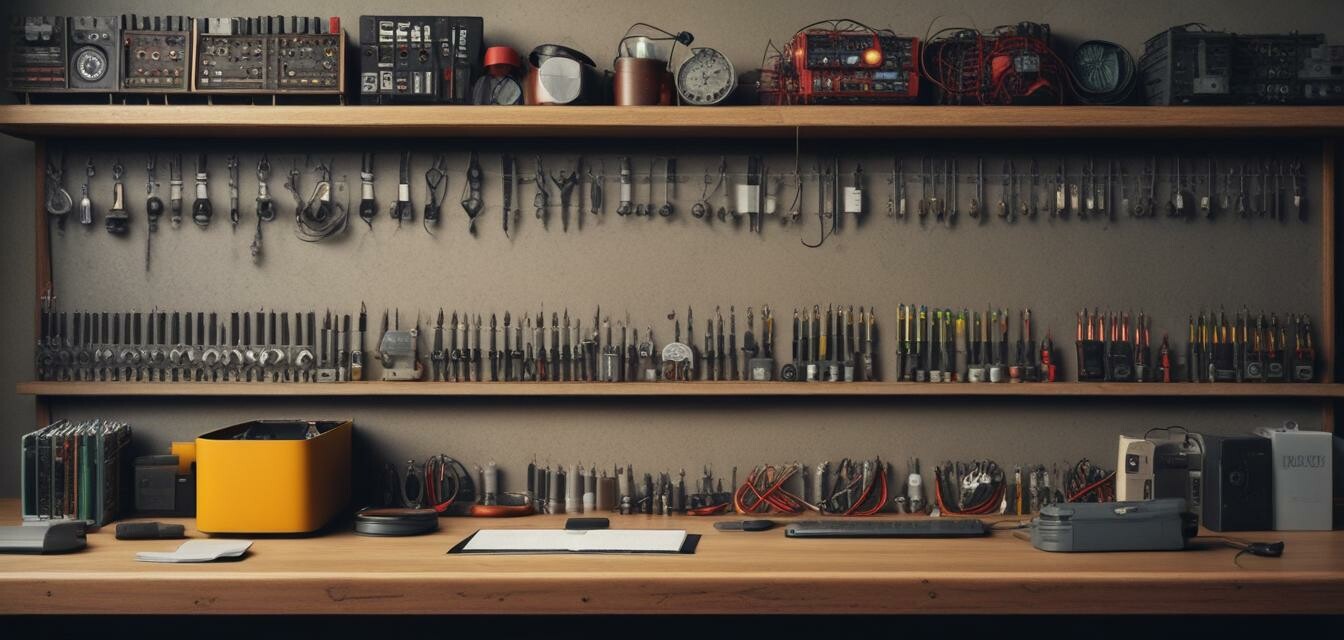
How to Effectively Plan Your Electrical Installations
Key Takeaways
- Understand the project requirements and objectives.
- Plan layout and electrical load requirements carefully.
- Choose appropriate materials and tools for the task.
- Follow safety regulations and building codes.
- Keep a detailed checklist for installation steps.
Planning electrical installations is crucial for ensuring both efficiency and safety. Whether you're a seasoned electrician or a DIY enthusiast, a well-structured approach can help you achieve excellent results. This guide will take you through essential steps, covering everything from layout design to material selection.
Step 1: Understand the Project Requirements
The first step in planning your electrical installation is to fully understand the requirements of your project. This includes identifying:
- Type of installation (residential, commercial, industrial)
- Specific features needed, such as lighting, heating, or appliances
- The layout of the space, including wall placements and furniture arrangements
Gather Necessary Information
To effectively gather information, consider the following:
- Architectural blueprints
- Client expectations and preferences
- Local electrical codes and regulations
Step 2: Plan the Layout
Designing the layout involves determining the placement of outlets, switches, and fixtures. Use design tools or paper sketches to visualize the placement. Key considerations include:
| Consideration | Details |
|---|---|
| Accessibility | Ensure outlets are easily accessible in every room. |
| Functionality | Align the layout with the intended use of each space (e.g., kitchen vs. living room). |
| Aesthetics | Consider the visual aspects of outlet and fixture placement. |
Calculate Electrical Load Requirements
Calculating the electrical load helps to ensure that your system can handle the required power levels. Here's how:
- List all the appliances and devices you intend to use.
- Check their power ratings, usually measured in watts.
- Sum the total wattage and divide it by the voltage (usually 120V or 240V) to determine amps needed.
Step 3: Choosing Materials and Tools
Selecting the right materials and tools is crucial for success. Consider the following categories of electrician supplies:
| Material/Tool | Description |
|---|---|
| Cables | Different types of cables for various applications (e.g., audio/video cable, power cable) |
| Conduit | Protects wiring from physical damage and deterioration |
| Tools | Essential tools include wire strippers, pliers, screwdrivers, and circuit testers |
Where to Find Quality Supplies
When sourcing supplies, check our categories on audio/video cable & accessories and conduit & conduit accessories. Always choose suppliers known for their quality materials.
Step 4: Follow Safety Regulations
Safety should be your top priority when planning electrical installations. Here are important safety tips:
- Familiarize yourself with local electrical codes.
- Use gloves, goggles, and other personal protective equipment (PPE).
- Check for live wires before beginning any work.
Step 5: Create a Detailed Checklist
Having a checklist can help ensure nothing is overlooked during the installation process. Your checklist should include:
- Materials and tools needed
- Safety measures to observe
- The sequence of installation tasks
Sample Checklist
| Task | Status |
|---|---|
| Gather materials | ✔️ |
| Prepare work area | ✔️ |
| Install junction boxes | ⏳ |
| Run cables | ⏳ |
Tips for Beginners
- Start with small projects to build confidence.
- Watch tutorial videos to learn techniques.
- Ask for help from more experienced electricians.
Pros
- Better organization leads to quicker installations.
- Increased safety awareness mitigates risks.
- Enhanced customer satisfaction through quality work.
Cons
- Time-consuming preparation can delay work.
- Requires access to a variety of tools and materials.
- Understanding regulations can be complicated.
Conclusion
Effective planning for electrical installations can drastically improve your performance and outcomes. From understanding project needs to choosing the right materials, each step plays a vital role in the success of your work. For more insights, check out our Buying Guides and explore further details about others products we have, including industrial lighting solutions and smoke detectors & safety equipment.